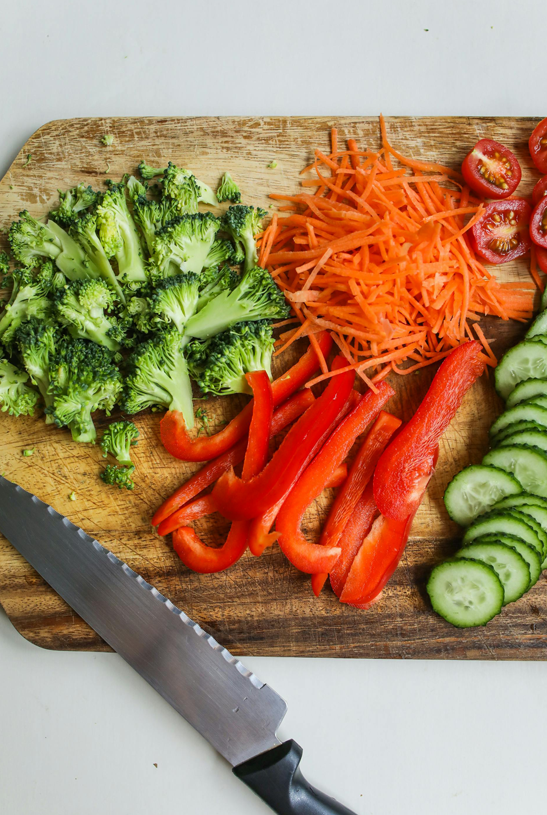The Best Christmas Plants to Brighten Your Home This Holiday Season
The Best Christmas Plants to Brighten Your Home This Holiday Season The holidays are the perfect time to bring a little extra life, color, and
Spring is officially in full swing in Connecticut, now is the perfect time to get your hands in the soil and start planting your vegetable garden. Whether you’re a seasoned grower or a first-time gardener, knowing what to plant — and when — is the key to a successful harvest.
Connecticut falls primarily in USDA Hardiness Zones 6a through 7a, meaning our growing season typically kicks off in mid-April and runs through late October. April and May mark the beginning of outdoor planting season, so let’s dive into what vegetables you can get in the ground during these pivotal spring months.
As the soil begins to warm and the risk of hard frost diminishes, April is ideal for planting hardy and semi-hardy vegetables that can tolerate cooler temperatures. Even if there’s still a chill in the air, many of these crops will thrive.
1. Leafy Greens
Lettuce, spinach, kale, and Swiss chard love the cooler temps of early spring. You can sow these seeds directly into your garden as soon as the soil is workable — ideally when soil temperatures reach at least 40°F.
2. Peas
Snap peas, snow peas, and shelling peas should be planted as early in April as possible. These legumes thrive in cooler weather and will climb happily if you provide a trellis or support.
3. Root Vegetables
Carrots, beets, radishes, and turnips can all be direct sown in April. These vegetables prefer the cool soil and will develop sweeter flavors when grown in springtime temps.
4. Brassicas
Cabbage, broccoli, cauliflower, and Brussels sprouts can go in the ground now as transplants. If you started seeds indoors in February or March, now’s the time to harden them off and plant them outside.
5. Onions and Leeks
Plant onion sets or transplants in April for a mid-to-late summer harvest. Leeks should also be planted early, as they take a long time to mature.

By mid-to-late May, soil temperatures in Connecticut are generally in the 60s, which is warm enough for most summer crops. This is when you can begin planting your warm-weather vegetables that are sensitive to frost.
1. Tomatoes
Wait until after the last frost date (typically mid-to-late May in Connecticut) to transplant tomatoes. Choose a sunny spot and be sure to harden off your plants before putting them in the ground.
2. Peppers and Eggplant
These heat-loving plants need warm soil and nighttime temperatures above 50°F. Transplant them in late May for best results.
3. Beans
Bush and pole beans can be direct sown once the soil has warmed to at least 60°F. Pole beans will need support, but both varieties are fast-growing and prolific.
4. Squash and Zucchini
These can be direct sown in May or transplanted if started indoors. Just be sure to give them plenty of space — squash plants tend to sprawl.
5. Cucumbers
Cukes love warm soil and full sun. Start them indoors in late April or direct sow in mid-to-late May once the ground has warmed.
6. Corn
Sweet corn can be direct seeded in May. Plant in blocks instead of rows for better pollination, which leads to fuller ears.
Know your last frost date: In most of Connecticut, that’s between April 25 and May 15.
Use row covers: For early April plantings, row covers can protect your crops from unexpected cold snaps.
Check your soil: A simple soil test can help you amend your garden with the right nutrients before planting.
Stagger your plantings: Especially with crops like lettuce and radishes, this allows for a steady harvest all season long.
With the right timing and a little planning, your spring garden will be bursting with fresh, homegrown veggies before you know it. April and May are all about setting the stage — and in Connecticut, we’re lucky to have a wide variety of vegetables that thrive during these months. Happy planting!

Missed some of our other posts? 💡
catch up on Moscarillo’s posts below
The Best Christmas Plants to Brighten Your Home This Holiday Season The holidays are the perfect time to bring a little extra life, color, and
Best Houseplants for Low-Light Winter Homes When winter casts long shadows and daylight becomes scarce, many homes lose the bright sun that plants crave. But
Prepping Your Garden for Winter in Connecticut As the days grow shorter and the temperatures drop here in Connecticut, gardeners in Zone 6 know it’s
Step Into the Magic of the Holidays at Moscarillo’s Experience the Magic of the Holidays at Moscarillo’s The holidays are one of the most magical
Creating a Greener Tomorrow: A Guide to Sustainable Landscaping Landscapes shouldn’t come at the cost of the environment. Sustainable landscaping is all about working with
POLLINATOR PARTY WEEKEND Celebrate the vital role of bees, butterflies, and other pollinators during Pollinator Weekend at Moscarillo’s Garden Shoppe! Whether you’re a seasoned gardener or
